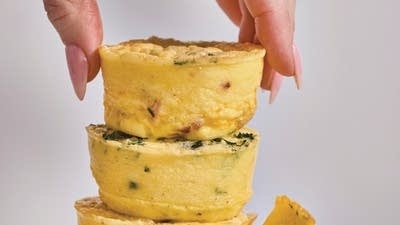
Fresh fish can be prepared in many wonderful ways. For retaining the quality and texture of freshness, one of the best methods is using it to make ceviche. This no-cook method for presenting fish is popular in Peru, where it is seen almost as an introduction to the country's coastal cuisine. The dish is light, acidic and easy to make. Keith Dresser is executive food editor at Cook's Illustrated, where he leads the recipe development process. He talked with Managing Producer Sally Swift about the process and ingredients for making ceviche. Find fresh fish at your local market or fish monget to use in this America's Test Kitchen recipe for Peruvian Fish Ceviche with Radishes and Orange.
Sally Swift: I want to talk to you about ceviche. It's a beautiful, simple dish that I don't think many people prepare at home.
Keith Dresser: I think you're right; it’s a very simple dish. I think that people who have access to fresh fish do prepare it at home. But I don't think a lot of people spend a time thinking about recipes; they just take a dice of fresh fish, throw in some lime juice, they let it sit for a while, and they put some aromatics – garlic, chilies, or onions. But we really wanted to spend some time with ceviche and have a perfect recipe that would yield silky fish with a lot of fresh, flavorful ingredients.
 Keith Dresser
(Photo: Daniel J. van Ackere)
Keith Dresser
(Photo: Daniel J. van Ackere)
SS: For people who don't know, ceviche is like marinated fish salad. What do home cooks need to know in order to do this?
KD: That's an accurate description. You're taking a dice or slices of fish and letting it sit in straight lime juice, or sometimes vinegar. What happens is that the acid is like heat; it cooks the fish, it affects the proteins, firms it up and makes it more opaque. But a lot of people don't use recipes – they are just kind of ad libbing it – and it doesn't work out quite right: the lime juice is too acidic or harsh, and the fish is unevenly cooked. We used a Peruvian technique to make our ceviche. We use something called leche de tigre or tiger’s milk. You see it in a lot of different ways in Peruvian ceviche. But what we're doing is we're taking a little bit of that raw fish and pureeing it with the lime juice and a little bit of olive oil to make it rich and add more aromatics. What that gives us is a thicker product that's going to coat the fish and cook it evenly. But it's also a little less acidic, so you don't have to worry about getting everybody to the table in the first five minutes and make sure that the fish isn't overcooked. You have a longer window, so you can make it a little bit further in advance.
SS: How are the Peruvians do it? Are they pureeing fish in their marinade as well?
KD: You see it some Peruvian dishes. Leche de tigre is a broad term that they use for a lot of different things. Like with our recipe that you processed from raw fish in with that lime juice marinade. Sometimes leche de tigre is the byproduct of ceviche; you've tossed it with a lime juice and it sat for a while and they actually do shots of this as an appetizer to ceviche.
SS: How do Peruvians serve ceviche?
KD: You typically see a crunchy corn product on a lot of Peruvian ceviche have. Something like corn nuts, those things that you eat with beer. They’re super salty, but also crunchy, so there’s a contrast with that silky fish. We see popcorn quite a bit, which we serve with our recipe; that also adds the same crunch and saltiness as the corn nuts. You’ll sometimes see plantain chips, tortilla chips really, basically anything that has a little bit of salt and a lot of crunch to contrast with the fish.
SS: Can I go back to what we talked about the very top that you said fresh fish. Can we use fish that's been frozen?
KD: You're better off to avoid frozen fish. The freezing process breaks down those proteins, and it has a tendency to be mushy once you cook it in the lime juice. Fresh fish, such as red snapper or sea bass, are good fish use – but anything that's super fresh. Go to your fish market or your fish monger; they're the people that you want to trust. They know what will be great for ceviche
SS: And it's such a great dish for summer.
KD: It's perfect for summer eating. It’s fresh and light, the colors are beautiful, the textures are great. You really can't get any better for summer.
SS: Any way I can work corn nuts into my diet, I am all over it.
KD: Exactly! They’re not just for beer anymore.
Before you go...
Each week, The Splendid Table brings you stories that expand your world view, inspire you to try something new, and show how food connects us all. We rely on your generous support. For as little as $5 a month, you can have a lasting impact on The Splendid Table. And, when you donate, you’ll join a community of like-minded individuals who love good food, good conversation, and kitchen companionship. Show your love for The Splendid Table with a gift today.
Thank you for your support.
Donate today for as little as $5.00 a month. Your gift only takes a few minutes and has a lasting impact on The Splendid Table and you'll be welcomed into The Splendid Table Co-op.




